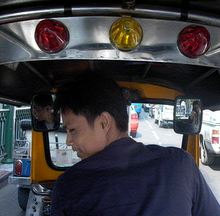My brother told me the other day that he goes through 62 speed bumps during his 23 kilometer route from home to our sister’s office in Kebayoran Baru, to his office in Sudirman, and back home again. That’s incredible! True he goes by small streets, but still! It means on average, for every 370 meters of travel, he would have to pass one speed bump!
I started wondering why this is the case. In my ten years of living in the U.S., speed bumbs can rarely be found along the streets. So how does the police ensure that people don’t speed up in (heavily-populated) residential areas? The answer is because they have traffic regulations in the form of stop signs and speed limits that people actually follow. In Jakarta, such signs can rarely be found. If you ask me why, I would not know the answer.
But signs are definitely much cheaper than speed bumps! If we are skeptical about whether it would work, think about the time when we hear that the police decided to enforce car passengers to use seat belts. We thought that it wouldn’t work. But apparently it works better than expected. Perhaps it’s worth a try with traffic signs – before the bottom of our cars got too many bumps!
Thursday, August 31, 2006
Subscribe to:
Post Comments (Atom)




3 comments:
I think our society makes custom as another form of norm (not sure whether its the other way around). As they feel it as part of their routine then somehow how amazing/ridicilus it is it will turnt to be something normal, like this 'speed bump' case. What makes it more amazing is the policy maker also think this way I guess:). Thats why they do not think it is necessary to install such signages. It is normal guys!! :)
I think what's missing here is enforcement, not regulation. There are plenty of speed limit signs there, but if there's no enforcement, what's the point of having them up?
julius,
i agree. with consistent enforcement, the police managed to have everyone use the seatbelts. but with speed limit signs, most housing complexes don't have them actually. so the sign and the enforcement must go hand in hand to create a culture.
Post a Comment